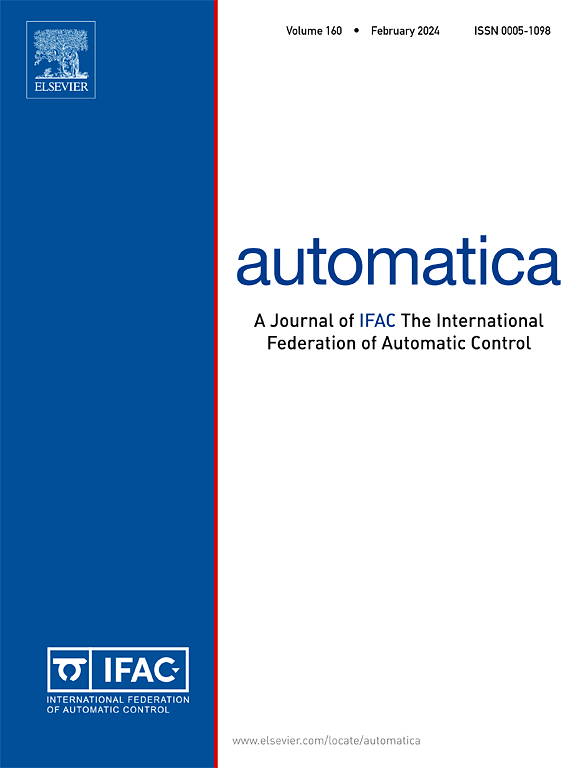基于lyapunov的深度系统自适应近似动态规划辨识
IF 4.8
2区 计算机科学
Q1 AUTOMATION & CONTROL SYSTEMS
引用次数: 0
摘要
近似动态规划(ADP)的最新进展是利用基于深度神经网络(DNN)的系统标识符来解决无限视界状态调节问题;然而,深度神经网络的权重并不是对所有层进行持续调整的。在本文中,ADP是使用一种基于lyapunov的DNN (Lb-DNN)自适应识别符进行的,该识别符涉及在线权重更新。当Lb-DNN的雅可比矩阵满足激励持续条件时,Lb-DNN的权值指数收敛到残差近似误差,相应的控制策略收敛到最优策略的一个邻域。仿真结果表明,与基线ADP DNN结果相比,Lb-DNN的RMS函数近似误差提高了49.85%,并且RMS调节误差、RMS控制器误差和RMS函数近似误差的收敛速度更快。本文章由计算机程序翻译,如有差异,请以英文原文为准。
Lyapunov-based adaptive deep system identification for approximate dynamic programming
Recent developments in approximate dynamic programming (ADP) use deep neural network (DNN)-based system identifiers to solve the infinite horizon state regulation problem; however, the DNN weights do not continually adjust for all layers. In this paper, ADP is performed using a Lyapunov-based DNN (Lb-DNN) adaptive identifier that involves online weight updates. Provided the Jacobian of the Lb-DNN satisfies the persistence of excitation condition, the Lb-DNN weights exponentially converge to a residual approximation error, and the corresponding control policy converges to a neighborhood of the optimal policy. Simulation results show that the Lb-DNN yields 49.85% improved root mean squared (RMS) function approximation error in comparison to a baseline ADP DNN result and faster convergence of the RMS regulation error, RMS controller error, and RMS function approximation error.
求助全文
通过发布文献求助,成功后即可免费获取论文全文。
去求助
来源期刊

Automatica
工程技术-工程:电子与电气
CiteScore
10.70
自引率
7.80%
发文量
617
审稿时长
5 months
期刊介绍:
Automatica is a leading archival publication in the field of systems and control. The field encompasses today a broad set of areas and topics, and is thriving not only within itself but also in terms of its impact on other fields, such as communications, computers, biology, energy and economics. Since its inception in 1963, Automatica has kept abreast with the evolution of the field over the years, and has emerged as a leading publication driving the trends in the field.
After being founded in 1963, Automatica became a journal of the International Federation of Automatic Control (IFAC) in 1969. It features a characteristic blend of theoretical and applied papers of archival, lasting value, reporting cutting edge research results by authors across the globe. It features articles in distinct categories, including regular, brief and survey papers, technical communiqués, correspondence items, as well as reviews on published books of interest to the readership. It occasionally publishes special issues on emerging new topics or established mature topics of interest to a broad audience.
Automatica solicits original high-quality contributions in all the categories listed above, and in all areas of systems and control interpreted in a broad sense and evolving constantly. They may be submitted directly to a subject editor or to the Editor-in-Chief if not sure about the subject area. Editorial procedures in place assure careful, fair, and prompt handling of all submitted articles. Accepted papers appear in the journal in the shortest time feasible given production time constraints.
 求助内容:
求助内容: 应助结果提醒方式:
应助结果提醒方式:


